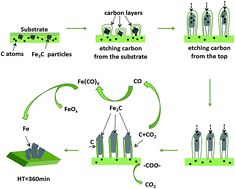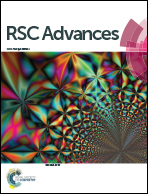Fe/N-doped graphene with rod-like CNTs as an air-cathode catalyst in microbial fuel cells
Abstract
This work proposes a simple and efficient approach for the formation of short carbon nanotubes (CNTs) on graphene sheets. This paper investigates the effect of heat treatment time on the morphology of CNTs. The mechanism of the growth and disappearance of CNTs are also investigated. Graphene is added into ferric trichloride (FeCl3)–melamine solution to obtain a suspension. The suspension is dried with stirring, followed by a carbonization process under N2 atmosphere, resulting in the formation of CNTs on graphene sheets. The thus-prepared carbon material can be used as a kind of durable and efficient non-precious metal oxygen reduction reaction (ORR) electrocatalyst. The ORR activity of the catalyst with favorable performance is characterized and compared with a commercial Pt/C catalyst. The results show that the ORR electron transfer number of Fe–N/G with CNTs is 3.91 ± 0.02. The Fe–N/G-MFC achieves a maximum power density of 1210 ± 23 mW m−2, which is much higher than Pt/C-MFC (1080 ± 20 mW m−2). It demonstrates that Fe–N/G materials with CNTs can be a type of promising highly efficient catalyst and can enhance ORR performance of MFCs. Besides, the reason for the disappearance of CNTs we investigated in this study may provide some ideas for the study of loading metal oxide catalysts on CNTs.



 Please wait while we load your content...
Please wait while we load your content...